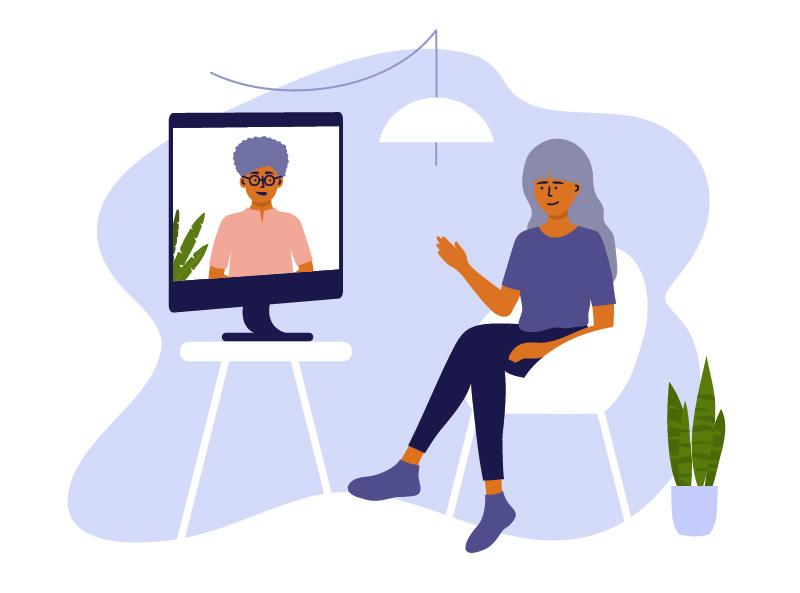Click to play audio. Listening time: 5 minutes
If you’ve ever felt afraid to start a conversation or like you don’t know what to say to people, sharpening your active listening skills can be a helpful first step. Anyone can learn to use these techniques!
-
Maintain Eye Contact
If you’re naturally shy, it may feel strange to look someone in the eye. When having a conversation, though, direct eye contact is a nonverbal cue that shows you’re interested in what the other person is saying. The same holds true for video chats — keep your camera on and look at the screen.
-
Stay in the Moment
Try to limit distractions when talking with others, whether on the phone or in person. Practice turning off your internal monologue (your to-do list can wait) or resisting the urge to daydream, and turn off the television or radio. Take a breath and open yourself up to what’s in front of you.
-
Watch Your Body Language
Smiling, nodding, tilting your head — these all let people know you’re engaged in the conversation. Similarly, crossing your arms and looking away may be interpreted to mean you’re not interested in the conversation or don’t care.
-
Offer Encouragement
In addition to nodding so the other person knows you’re listening, respond with simple phrases that drive that point home: “Yes,” “I get that,” “Ain’t that the truth,” etc.
-
Avoid the Urge to Interrupt
Speaking over someone can be interpreted as disrespectful and distracting. If you do interrupt someone, simply say something like, “I’m sorry I interrupted you. I just got so excited I forgot myself.” Then return the conversation to the last topic: “You were telling me about…”
-
Paraphrase What’s Being Said
Let people know you’re paying attention to what they’re saying by reflecting back to them. Try saying, “What I’m hearing is…” or “Let me see if I’m following you…,” and summarize the speaker’s main points.
-
Show Interest by Asking Questions
Open-ended relevant questions — where the answer can’t be a simple yes or no — keeps conversations flowing. Instead of making a statement, ask, “What was that like?” or “Tell me more.”
-
Clarify for Understanding
If you’re not sure what the other person is trying to communicate, ask questions — for instance, “I’m not sure I understand what you mean. Could you please explain more?” Asking someone to repeat what they’ve said is helpful, too, especially if you’re having trouble hearing because of background noise.
-
Remain Nonjudgmental
When you’re having a conversation with someone, and especially when you disagree with them, it’s easy to focus on your own thoughts instead of what the other person is saying. When you’re listening actively, you wait until the speaker is finished before expressing your thoughts. This has the added benefit of giving you some time to think of a graceful way to express your own opinion.
Ways to Start Practicing Active Listening
 Now that you understand the finer points of active listening, it’s time to practice these skills. An easy way to begin? Observe conversations around you — TV shows and movies count — and make note of examples of active listening.
Now that you understand the finer points of active listening, it’s time to practice these skills. An easy way to begin? Observe conversations around you — TV shows and movies count — and make note of examples of active listening.
Next, call a friend or loved one on the phone to practice. Once you find out if they have time to chat, ask them a question. Here are some good questions to start with:
- Did you hear about… (a news item, a birth, etc.). What do you think about it?
- What are you looking forward to this week?
- What are you watching or reading these days that’s interesting?
Give them your full attention while they answer and practice using the active listening skills we discussed above: ask open-ended questions, use phrases to let them know you’re listening, and don’t interrupt with your own thoughts.
Afterwards, note how you felt during the conversation. Don’t be surprised if you feel a little tired; you’re building some new active listening muscles — muscles that will help you feel more confident in your ability to connect with others as you continue to widen your social circle.




